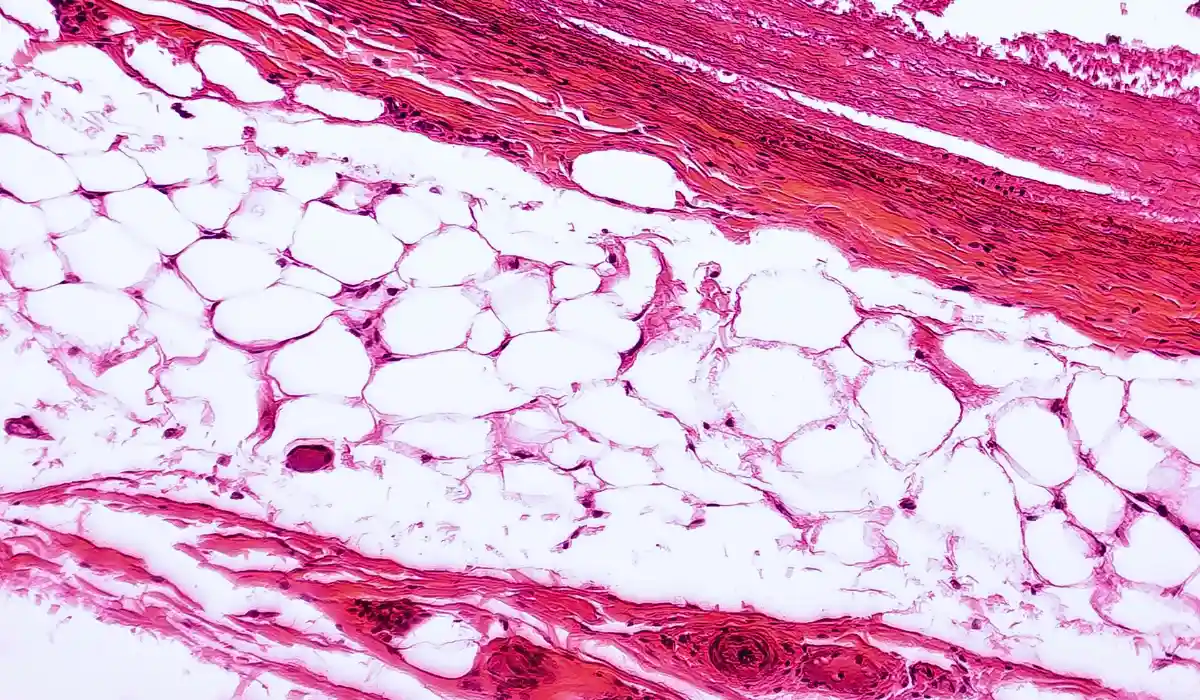Belly fat, also known as abdominal fat has become an increasing health concern in recent years. This kind of fat accumulates deep inside the abdomen and can be dangerous, as these fats are capable of wrapping the internal organs causing metabolic dysfunction. Excess belly fat is increasingly rampant yet frustratingly difficult to lose.
However, people often blame the wrong culprits like carbs or lack of exercise as the primary cause. This may be counterintuitive, but adipose tissues serve vital roles that keep fat stores balanced and waistlines firm.
In this article, we will look deeper into the question “Does low adipose tissue cause belly fat?. So buckle up, and let’s dive together into this stream of information.
What Is Adipose Tissue
Adipose tissues also called body fat, are a type of connective tissue that extends throughout the body. These tissues can be found under the skin, between internal organs, and in the inner cavities of bones. It produces crucial hormones like leptin and adiponectin that influence hunger, fat burning, glucose metabolism, and where the body deposits fat.

Communication of this tissue happens through hormonal signals with other organs throughout the body as well as with the central nervous system, regulating metabolism.
Adipose tissue constitutes about 80 percent fat and the rest 20 percent includes other tissues. The tissue performs several important functions regarding the regulation of the whole body’s health.
Therefore, changes in adipose tissue can result in malfunctioning of the body. Studies reveal excess adipose tissues have an important role in developing metabolic syndrome.
People with low adipose tissue tend to have impaired hormone production and fat storage tendencies, encouraging belly fat growth. Their bodies haul visceral fat from other areas to the abdominal region to safeguard organs when adipose tissues get too scarce.
Even individuals following nutritious diets can develop stubborn belly fat if adipose tissue distribution and function are unbalanced.
Adipose Tissues And Belly Fat
There are two types of adipose tissues- subcutaneous and visceral tissues. The adipose tissue seen beneath the skin is referred to as subcutaneous tissue, while the one that lines the internal organs is referred to as visceral tissue.
Too much visceral adipose tissue can cause belly fat that push out of the belly. Therefore, in a way having too little subcutaneous fat decreases the padding and protection in the abdomen, allowing visceral abdominal fat to accumulate more readily around the organs when excess calories are consumed.
Furthermore, adipose tissue releases beneficial hormones that help regulate appetite and metabolism. When low in adipose tissue, there may be an imbalance in these hormones, fuelling hunger signals along with inefficient energy utilization.
The body may also lower its calorie burn to adapt to the lesser adipose tissue, which makes it easier to gain fat. Another issue regarding lower adipose tissue levels is appetite changes. Appetite levels also tend to increase when low in adipose tissues. All these changes make it simpler to overeat calories that get stored as visceral fat around the midsection.
In essence, low adipose tissue sets off a cascade that alters appetite and metabolism in ways that promote abdominal weight gain. Even if someone eats healthy and exercises regularly, they may still struggle with stubborn belly fat if lacking sufficient healthy adipose tissue.
Additionally, genetics has a role in how adipose tissue is distributed along with its functionality. Some individuals might be genetically prone to lower adipose tissue levels, making them more vulnerable to abdominal obesity.
Conclusion
In conclusion, answering the question “Does low adipose tissue cause belly fat?” Yes, reduced subcutaneous adipose tissue levels can directly bring about excess visceral fat accumulation in the abdominal region. Adipose tissue plays integral roles in insulating the body, cushioning organs, and releasing hormones that coordinate appetite and metabolism.
When individuals have insufficient adipose tissue, their bodies may start hoarding body fat in harmful ways to make up for the loss, resulting in belly fat formation, revealing an interesting irony- in some situations, having too little body fat drives additional fat storage around the midsection.
If adipose tissue level dips too low from restrictive dieting or other factors, the body fights back by altering hunger signals and the way calories get utilized and transported. These changes promote the storage of visceral fat cells deep in the abdomen, even if an individual maintains healthy lifestyle habits.
Additionally, genetics also pose an important role in inclining towards reduced adipose tissue, making them vulnerable to abdominal weight gain. While visceral fat protects organs, excess levels can cause dangerous metabolic dysfunction.
Shedding visceral belly fat requires an intricate balance of improving body fat distribution, hormone regulation, nutrition, and fitness habits tailored to individual requirements. Restoring adipose tissue functionality is key for long-term waistline management.
When the body senses sufficient padding, visceral abdomen fat stores get freed up for energy use. So should we be aiming to boost adipose tissue instead to help conquer abdominal obesity?

